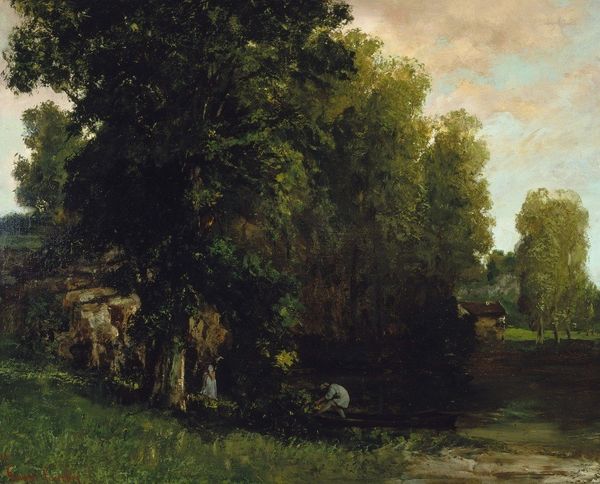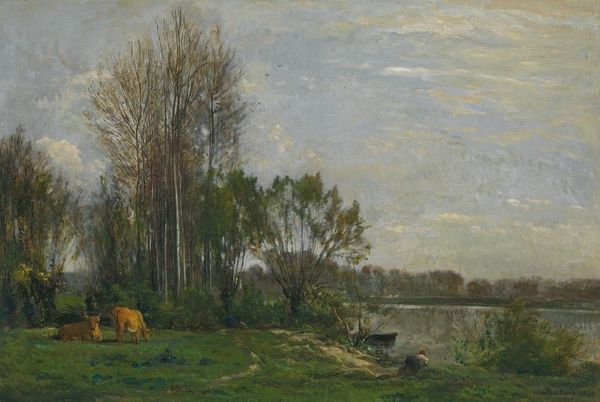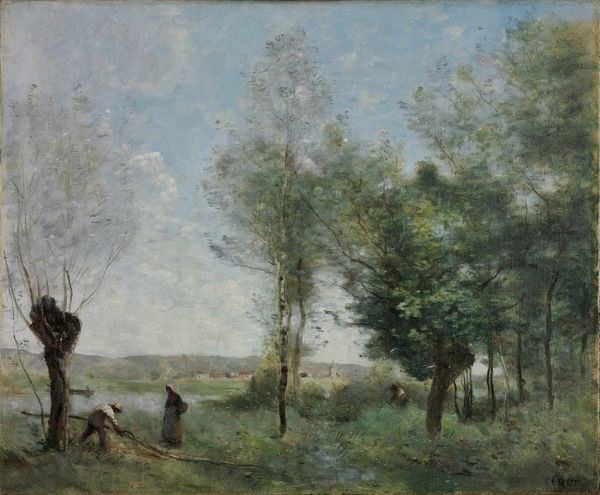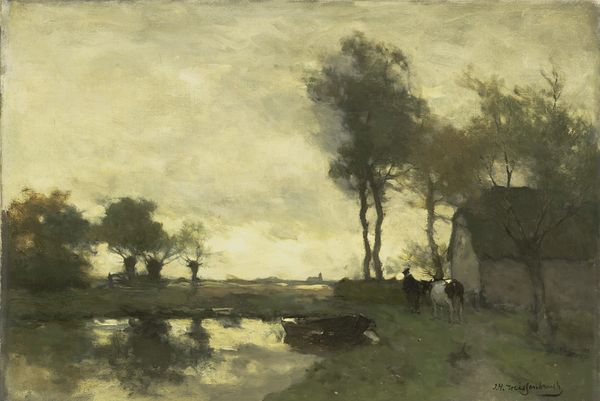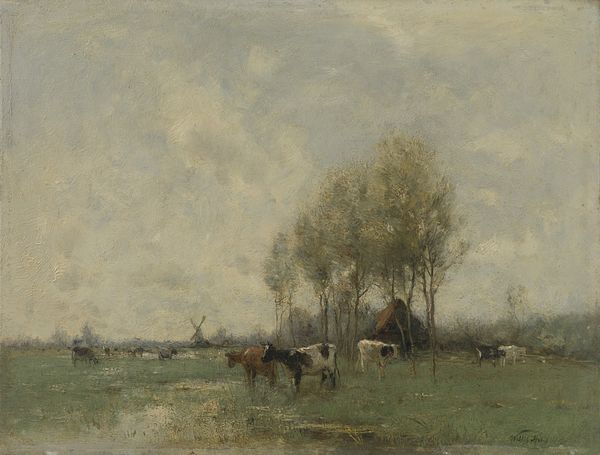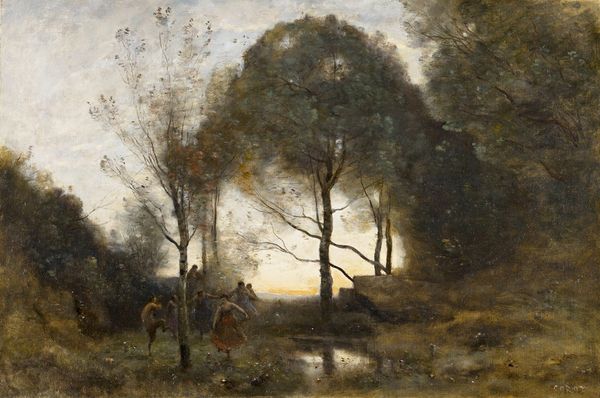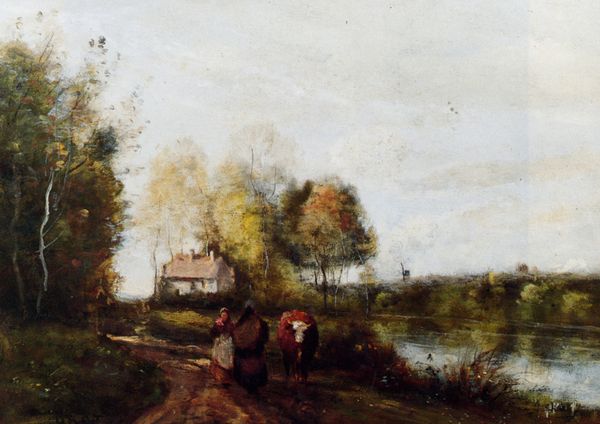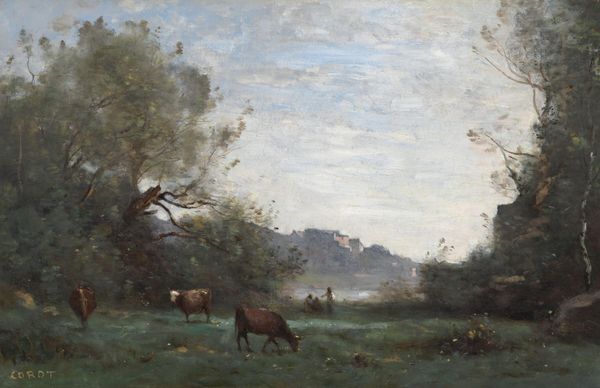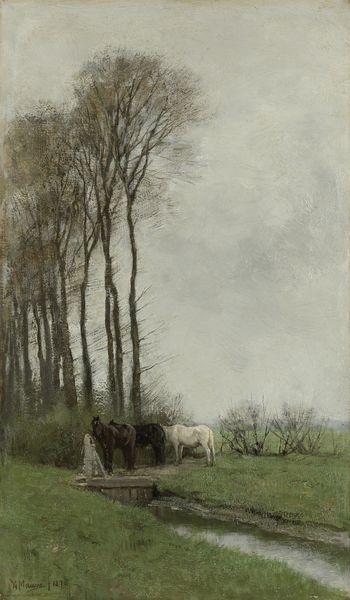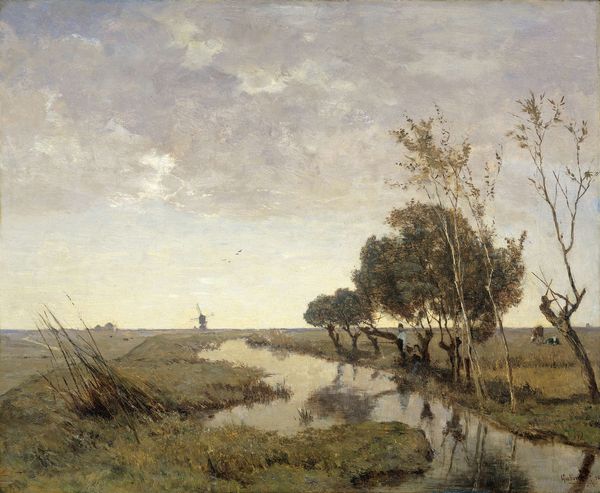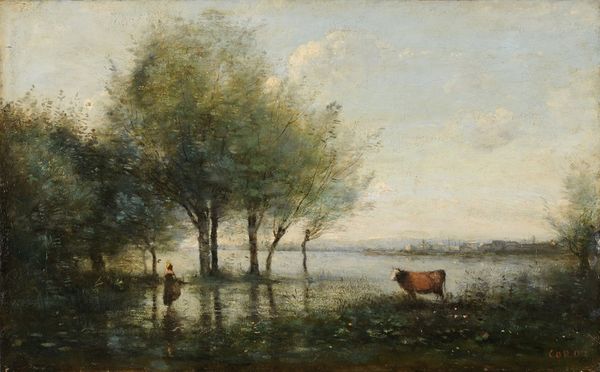
painting, plein-air, oil-paint
#
water colours
#
painting
#
plein-air
#
oil-paint
#
landscape
#
oil painting
#
genre-painting
#
italian-renaissance
#
realism
Dimensions: 14.5 x 28 cm
Copyright: Public domain
Curator: This is "Pasture on the Arno in Rovezzano," a plein-air oil painting that's attributed to Vincenzo Cabianca. It beautifully captures a serene landscape along the Arno river. Editor: My first thought is of hushed stillness. The subdued palette gives the entire scene a feeling of gentle calm, of the kind that would emanate peace for rural folk tied to its natural and cultivated terrain. Curator: Absolutely, there's a quiet symbolism in the very act of portraying everyday rural life. Notice how the presence of laundry strung out to dry evokes an enduring sense of domesticity. How might we interpret this imagery within the context of broader social narratives concerning rural Italian identities? Editor: I read that in relation to representations of women. The washing could speak volumes about gendered labour roles, rural livelihoods, class struggle, or the experience of those whose voices and experiences often were, and even sometimes are, suppressed or unseen within the established artistic historical narratives. What does the image have to say about ownership, perhaps, or displacement? Curator: An interesting lens to use to analyse the painting is to examine the recurring symbol of the family house near a barren-limbed tree as a potential omen. Or are we possibly stretching for a more profound emotional layer? Editor: Perhaps. But considering art history's historical gatekeeping in this historical context, reading beyond the pastoral veneer becomes essential to uncover potentially marginalised realities that existed on and beside that landscape. Curator: The interplay between shadow and light contributes significantly to the overall composition; the brushstrokes guide your eyes and let the scene evoke the transience of light itself. Cabianca's ability to achieve a sense of movement using static mediums seems key in comprehending this style of artistic observation. Editor: And that invites us to question the perspective presented. By humanising that area beyond the aesthetics, can we start looking at the ethics and social problems prevalent in that location or in similar conditions? That could let this become more than a picture and more an agent for dialogue, perhaps. Curator: I think your ideas broaden our interpretation of art in fascinating ways. Editor: Agreed. Contextualising these kinds of depictions empowers us to see and act justly.
Comments
No comments
Be the first to comment and join the conversation on the ultimate creative platform.
